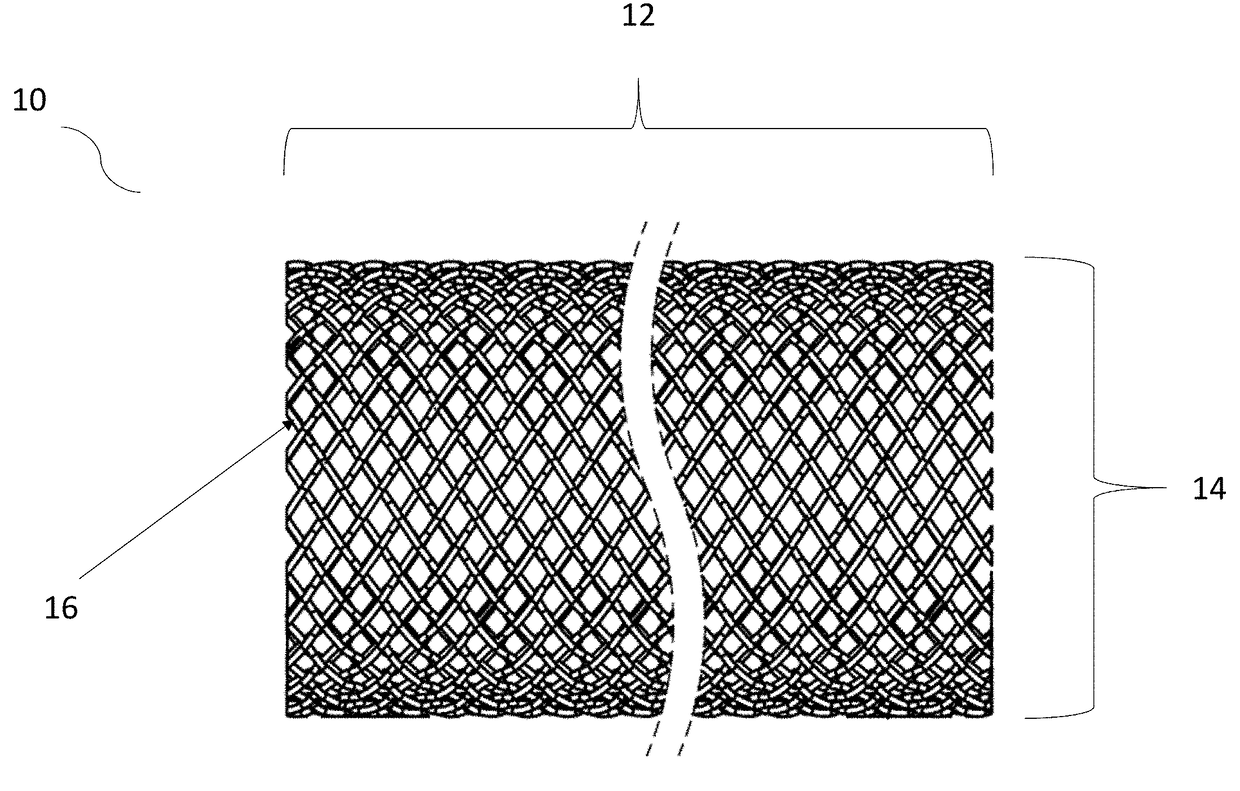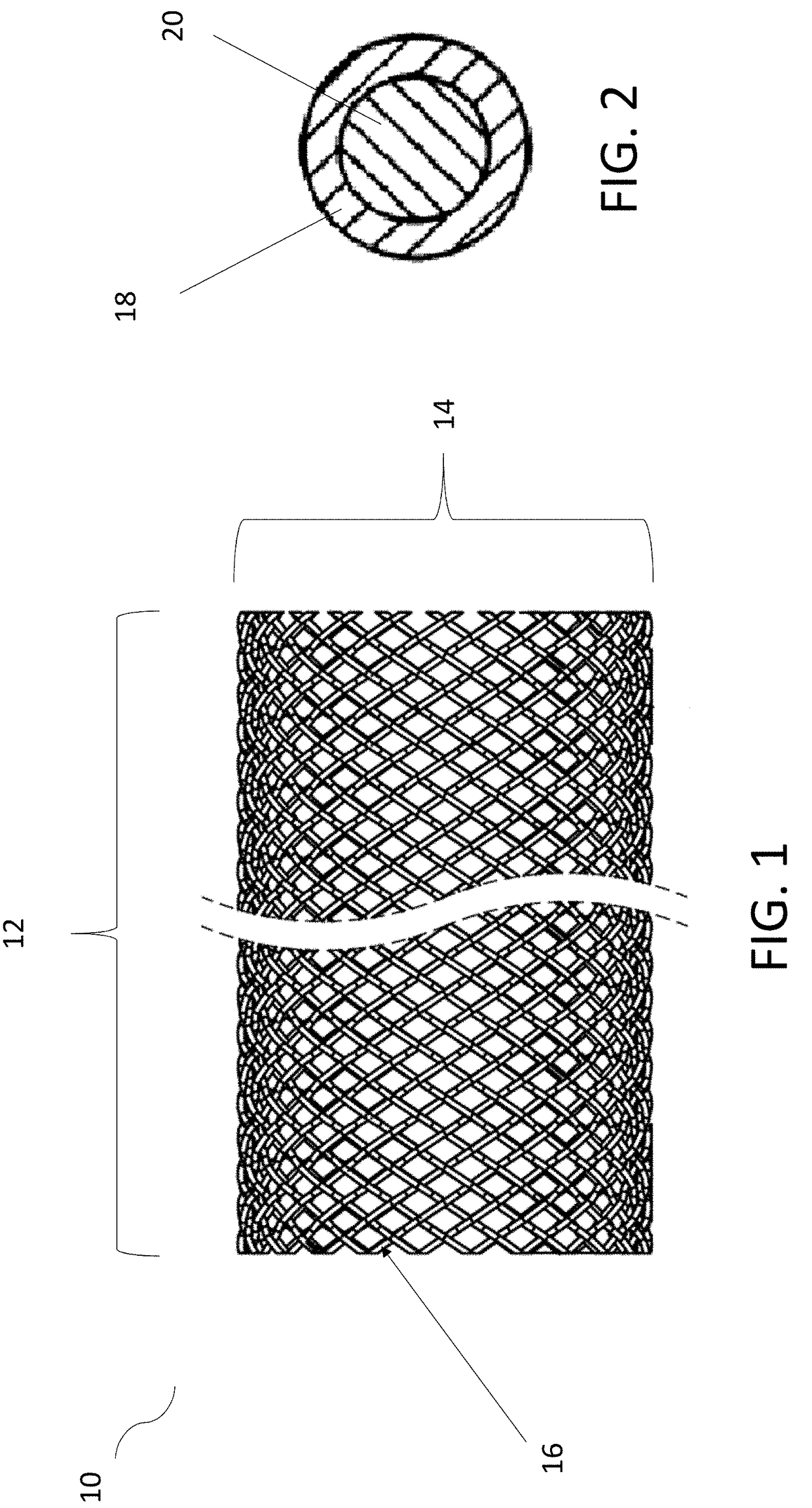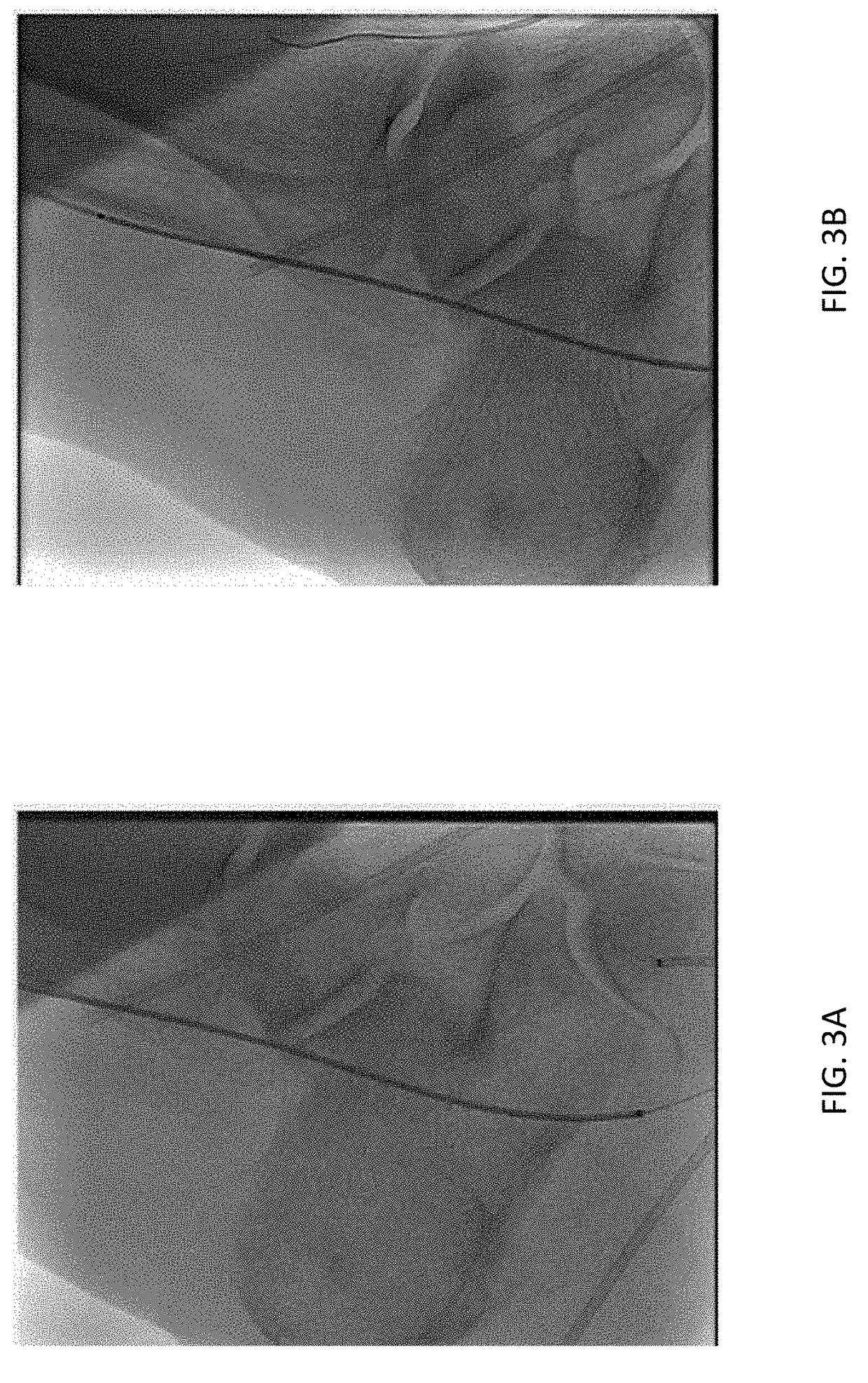Method and apparatus for treating critical limb ischemia
a technology for critical limb ischemia and cli therapy, applied in the field of medical devices and methods, can solve the problems of affecting the patient's treatment progress, so as to avoid the need for amputation, maintain the patency of the stent, and increase the visualization of the stent
- Summary
- Abstract
- Description
- Claims
- Application Information
AI Technical Summary
Benefits of technology
Problems solved by technology
Method used
Image
Examples
Embodiment Construction
[0047]Embodiments of the present series of apparatuses, systems and interrelated methods pertain to a coil-reinforced stent use during angioplasty procedures. Throughout the description, for the purposes of explanation, numerous specific details are set forth in order to provide a thorough understanding of the present invention. It will be apparent, however, to one skilled in the art that the present invention may be practiced without some of these specific details. In other instances, well-known structures and devices are shown in generic form to avoid obscuring the underlying principles of the present invention.
[0048]FIG. 1 illustrates a cross-section view of one embodiment of a braided non-woven micro stent 10, wherein the micro stent 10 is preferably comprises of forty-eight (48) individual strands arranged in a braided configuration for use in a patient during a medical procedure. In the embodiment shown, the micro stent 10 possesses a length 12 and an outer diameter 14 that de...
PUM
 Login to View More
Login to View More Abstract
Description
Claims
Application Information
 Login to View More
Login to View More - R&D
- Intellectual Property
- Life Sciences
- Materials
- Tech Scout
- Unparalleled Data Quality
- Higher Quality Content
- 60% Fewer Hallucinations
Browse by: Latest US Patents, China's latest patents, Technical Efficacy Thesaurus, Application Domain, Technology Topic, Popular Technical Reports.
© 2025 PatSnap. All rights reserved.Legal|Privacy policy|Modern Slavery Act Transparency Statement|Sitemap|About US| Contact US: help@patsnap.com



